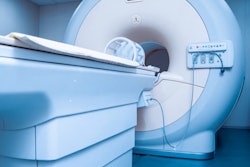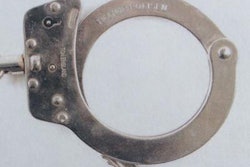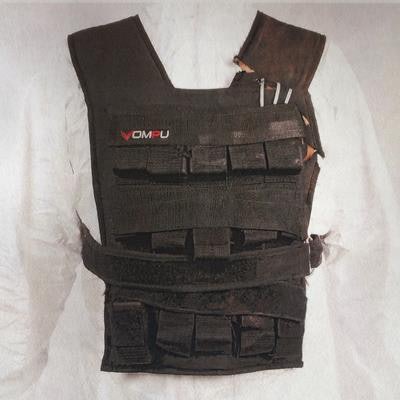
The police report into the serious MRI accident in Swedish Lapland contains a series of photos of the weighted exercise vest worn by the specialist nurse who got sucked into the scanner gantry in October 2019. The report uncovers the mystery surrounding the garment that caused the accident.
The 195-page document was finalized on 24 February. AuntMinnieEurope.com requested a copy of the report from Peter Wallerström, an investigator at the police's environmental crime unit, and this request was granted.
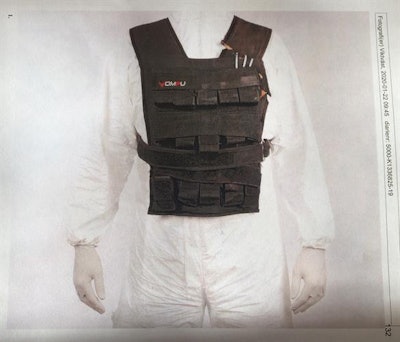 The front and back panels of the vest worn by the specialist nurse in Luleå. All photos courtesy of Swedish Police.
The front and back panels of the vest worn by the specialist nurse in Luleå. All photos courtesy of Swedish Police.The accident happened in a mobile MRI unit located outside Sunderby Hospital in Luleå. The nurse, who has remained anonymous throughout the investigation, was sucked into the scanner's gantry, lost consciousness, and had to be freed through the efforts of security guards and the patient who was being scanned.
To protect the identity of the nurse and patient, large sections of the text in the police report have been blacked out, including most of the nine-page transcript of the interview conducted by Wallerström with the specialist nurse on 16 December.
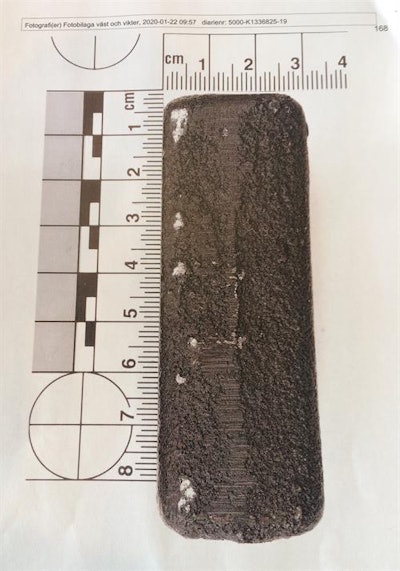 The nurse had inserted 13 metal weights, including this one, into the pockets of the vest.
The nurse had inserted 13 metal weights, including this one, into the pockets of the vest.Photos in the report, however, reveal that the nurse's vest was made by OMPU, a Swedish fitness brand that provides clothing accessories and gear for "functional training and an active lifestyle," according to the Stockholm-based firm's website.
The nurse had tucked a total of 13 metal weights into the pockets of the vest, and it was these weights that pulled him into the scanner.
Why was the nurse wearing the vest in the first place? He may have been won over by the seductive marketing promises of OMPU.
"Scandinavia needed its own full concept sports brand with that extra edge," the company states on its website. "Whether you're a beginner or elite athlete, you should be able to use our products. OMPU has become a popular brand among new modern sports. To wear or use OMPU should give a sense of fitness lifestyle that exudes challenge. 'This person wants a little more and is not afraid to challenge themselves and take their training to the next level.' "
On 21 February, prosecutor Märta Warg decided there was insufficient evidence to take the case to court. She said it could not be stated that the nurse "deliberately took a risk that could have caused serious danger of bodily injury to another person," and gross negligence and deliberate risk-taking could not be proved.
Given the high level of reader interest in this accident and the lessons it holds for MRI safety, a second article about the police report will be posted on AuntMinnieEurope.com next Tuesday. The second piece will focus on the evidence submitted by Aleris, the company that owned and operated the mobile unit, and other important aspects of the case.






